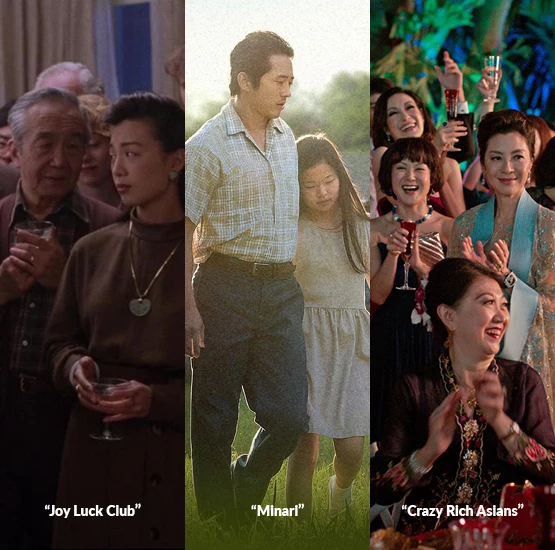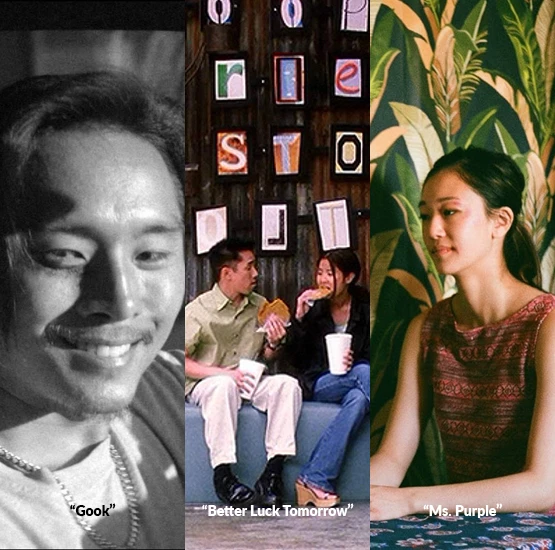9 Movies to Celebrate AAPI Heritage Month
Movies have the power to inspire empathy, connection and understanding around important issues. May is Asian American and Pacific Islander Heritage Month. Help amplify AAPI voices and provide students with new perspectives using relevant films. Below are some of our top programming picks to share with your campus.
Joy Luck Club
Adapted from Chinese-American author Amy Tan’s best-selling novel, “The Joy Luck Club” tells tails of a mahjong club of Chinese immigrant mothers and their respective adult daughters. In raising their daughters to assimilate fully in American life – and speak perfect English – the daughters are disconnected from their heritage. As a result, the mothers and daughters clash culturally throughout the film to highlight both the struggles of motherhood and the realities of immigration in America.
Minari
Nominated for six Academy Awards, including Best Picture, “Minari” has been lauded for shining a light on the Asian American immigrant experience. The semi-autobiographical film was inspired by director Lee Isaac Chung’s own childhood as it tells the story of one family’s move from Korea to rural Arkansas in pursuit of their American dream.
Crazy Rich Asians
Based on Kevin Kwan’s best-selling book and directed by Jon M. Chu, “Crazy Rich Asians” was the first studio film in over 25 years – since 1993’s “Joy Luck Club” – to feature an almost all Asian-American cast when it premiered in 2018. The plot centers on a Chinese American woman named Rachel who learns her boyfriend hails from one of Singapore’s wealthiest families. A series of clashes between tradition and individualism, what the heart wants and familial duty, make for an interesting dilemma when it comes to choosing true love.


The Big Sick
The movie is loosely based on the story of comedian and actor Kumail Nanjiani and his now wife Emily’s complex romantic relationship. Kumail’s parents were determined to arrange his marriage to a Pakistani woman, so he kept his relationship with Emily a secret. Emily finds out and breaks up with him but then falls ill with a rare disease. While she’s in a medically-induced coma, Kumail must navigate the prickly attitudes of both her family and his while figuring out his own loyalties to tradition.
Fast and Furious: Tokyo Drift
Named one of the Top 20 Asian American films of the last 20 years by the Los Angeles Times, “Fast and Furious: Tokyo Drift” introduced mass audiences to a fan favorite (Sung Kang’s Han Seoul-oh) and led to unprecedented franchise evolution. The film’s storyline revolves around Sean Boswell discovering the world of drift racing when he’s sent to live with his father in Japan.
Yellow Rose
“Yellow Rose” is a timely immigration story about an undocumented Filipina teen named Rose who dreams of one day leaving her small Texas town for a career in country music. But when her mom is suddenly detained by ICE, Rose must decide whether to pursue her dreams as a performer or leave the only home she has ever known in order to be reunited with her mother.
Gook
Eli and Daniel, two Korean American brothers that run their late father’s shoe store in a predominantly African American community of Los Angeles, have a unique and unlikely friendship with an 11-year-old African American girl named Kamilla. During the first day of the 1992 LA riots, the two brothers and their young friend are forced to defend the store while contemplating their own personal dreams and what it means to be a family.
Better Luck Tomorrow
A group of young, high-school overachievers become bored with their perfect lives and start getting involved in petty crime that gets increasingly dangerous and illegal. The film’s imperfect lead characters help challenge stereotypes and the “model minority” myth often applied to Asian Americans.
Ms. Purple
“Ms. Purple” is a poignant drama about sister and brother, Kasie and Carey, who were raised and are now seemingly stuck in Koreatown. Abandoned by their mother and brought up by their father, the siblings continue to struggle with profound emotional wounds from the difficulty of the parental dynamic. Now, with their father on his death bed, the estranged Carey comes home to help Kasie care for him. Old ties are renewed and a relationship restored in this vibrant, deeply affecting portrait of Asian American siblinghood in Los Angeles.

All of these films are available for your Asian American and Pacific Islander Heritage Month programming. Click here to browse our entire collection of AAPI films.